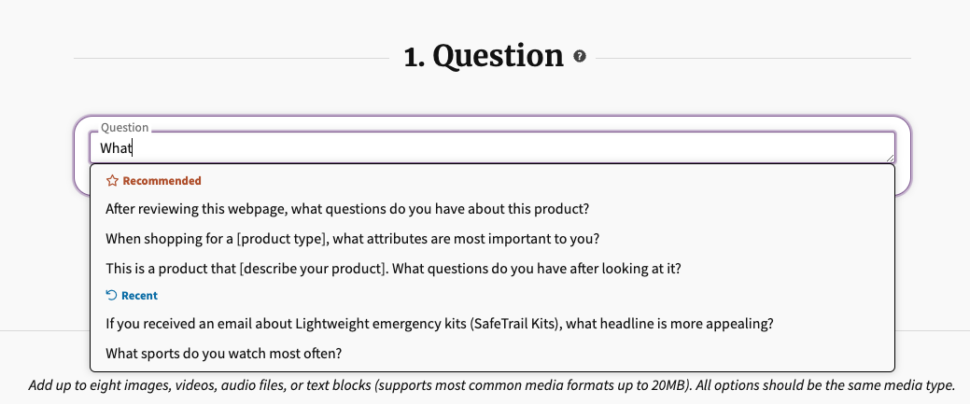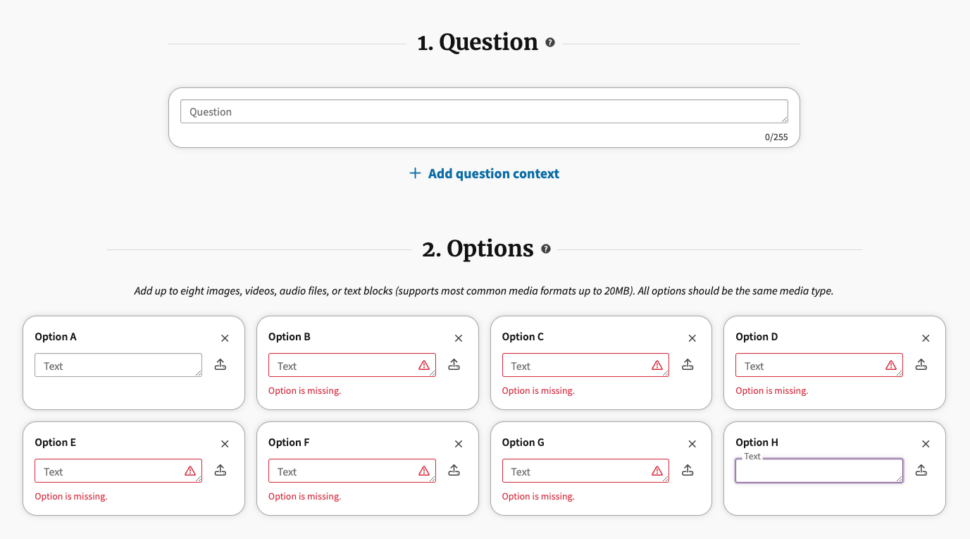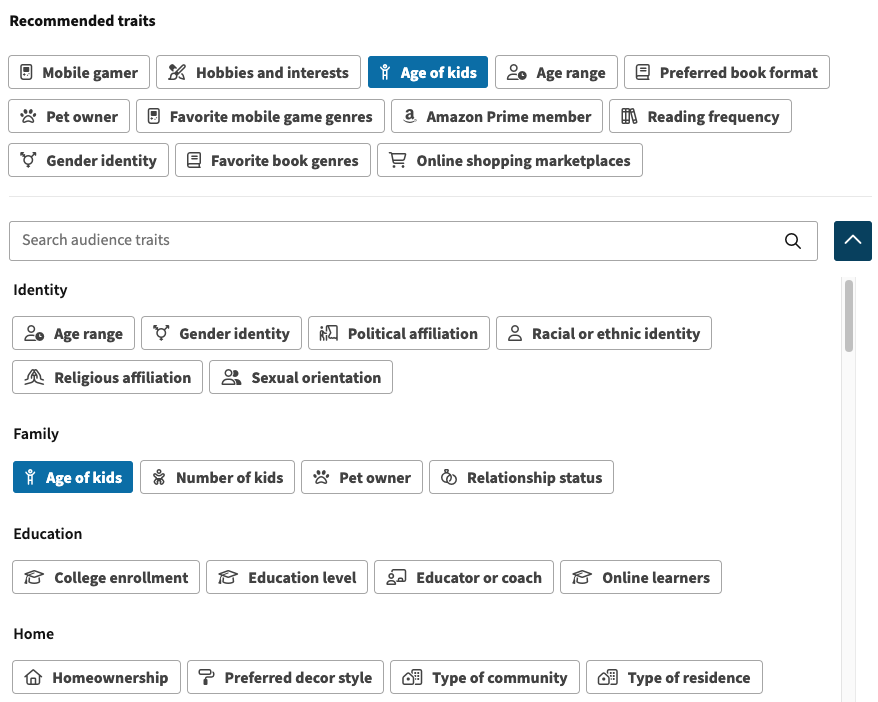Business idea validation: how to test new product ideas
What is business idea validation?
Idea validation is the process of determining whether your business idea has a good chance of succeeding in a real-world market. You want to have reasonable certainty that there is an appetite for your product before committing large amounts of time or money to create something that no one will buy.
The idea validation process is a great help to entrepreneurs when first planning a business model. You can research and test the how well your potential product aligns with customer demand, informing decisions on pricing or functionality based on your target customers. You can also see how your potential product compares to current solutions already available in your target market.
In the past, methods of idea validation were things like focus groups or trial product releases, but nowadays you can use certain types of usability testing for early market feedback. In fact, quick and easy user testing like PickFu is often the cheapest and fastest method for testing new product ideas.
Table of Contents
- What is business idea validation?
- Why should I validate ideas?
- Best methods for business idea validation
- Idea validation with a built-in audience
- How much does idea validation cost?
- How to validate an idea using PickFu
- Validate your ideas with PickFu
Why should I validate ideas?
Idea validation provides a proof of concept that will help you build your business model, investment pitch, or market entry strategy. It also might save you from sinking resources into a poorly conceived or unnecessary product.
While validating an idea is not a guarantee of future success, the process will build confidence in your product while simultaneously gathering useful ideas and feedback on how it might be improved. Whether you want to methodically validate SaaS ideas or you just have an idea for an app, you should always check with your target market to see if your product solves a problem worth solving.
In other words, idea validation:
- Saves time
- Saves money
- Gathers useful feedback from potential customers to help improve the product
- Builds confidence in the idea
- Helps you better understand your target market
- Provides promising evidence for investors and early adopters
Below, we’ll dive into several methods for validating your business or product ideas – as well as how to quickly and easily gather feedback on your ideas with PickFu’s consumer research platform.
Best methods for business idea validation
The most important step in idea validation is to build or find an audience of potential customers in your niche. Successful businesses usually have a successful customer feedback strategy in place to discover new pain points and generally check in on the user experience.
Your friends and family almost never fit the bill. Their personal relationship with you will bias their feedback, and biased feedback may send you down a misguided or unwise path for your business.
There are better — and unbiased — ways to reach your audience for testing and validating your ideas. Here are seven methods.
1. Talk to your market directly
If you have the means to meet potential customers in person, try asking them questions about the products they use, the frustrations they have, and where they find information about similar products. Whether formal or casual, user interviews can always help you get into the mind of your ideal customer.
For instance, if you’re building an online store aimed at runners, join some running groups and talk to the people you meet. Ask for referrals to other people who might be willing to provide input. Create a contact list (with permission) from everyone you talk to. While some may not agree to join, it’s better to talk only to those interested in engaging with you than those who may feel intruded upon.
Keep the initial conversations relaxed and open-ended; ask about their needs instead of selling them on your idea. Then, once you’ve established trust, you can collect more specific feedback.
2. Meet your market online
Join relevant communities where your target market gathers online. These might be social media circles, LinkedIn groups, Reddit communities, or other online places where you can ask questions of fellow members.
Keep in mind that many of these communities have restrictions against self-promotion, so spend some time familiarizing yourself with the group, learning its rules and rhythms, and creating connections to members before asking for help. Once you’ve nurtured some online discussions, ask for permission to add your new connections to your prospective customer list.
Alternatively, you can use dedicated market research or survey platforms like PickFu to reach a panel of your ideal customers online and ask them for feedback. More on that later!
3. Landing pages
Hosting a simple landing page is great for proof of concept testing as well as idea validation. Landing pages don’t have to be a big investment, and you can get an head start on building your own following or email subscribers.
Essentially, you just create a one-page website that explains your product and allows early adopters to sign up for the release. If you’re far enough in product development, you can even accept pre-orders – getting enough paying customers in the early stages is a good sign your product will be a success.
You can style the landing page in whatever way suits you marketing, but it’s always a good tip to list your unique value proposition to give visitors an incentive to sign up.
4. Minimum viable product
A minimum viable product, or MVP, is a bare-bones product you enter into the market to test its viability and research improvements. A step-up from prototype testing, releasing an MVP gives you early feedback when it’s still easy to influence product development.
Although you need to invest more in manufacturing and distribution, MVPs over the advantage of testing the product-market fit in the real world with paying customers. In terms of idea validation, it’s more of a sink-or-swim approach, but some conceptual products become more attractive when customers actually see them in a store, online or offline.
5. Contests and giveaways
Use a giveaway platform like KingSumo or Rafflecopter to create a contest and offer entrants the chance to win your product for free. Collecting hundreds or thousands of entrants shows the product is interesting to people. However, if you can’t convince people to give up an email address even if the product is free, it’s likely they won’t buy it when it’s not free.
6. Social media marketing
Build an audience by using relevant hashtags, pictures, and shoutouts to other profiles to grow an audience of loyal followers to your own profile. Monitor how quickly the audience grows and how engaged it is. Depending on the platform you’re using, you may be able to set up polls or surveys for direct questions. Alternatively, you can create and send a survey on PickFu to reach a built-in group of your target audience without having to rely on social media.
7. Crowdfunding campaigns
Crowdfunding sites like Kickstarter and GoFundMe are a good litmus to gauge interest in new or experimental products. Are users willing to back your idea and, if so, what do they say about it? Just remember that if your campaign meets its funding goal, you’ll have to deliver whatever rewards you promised, so factor this effort into your budget.
Idea validation with a built-in audience
Growing an audience requires time and hard work, and could take months – or not happen at all. If you’re in a hurry to get your project off the ground, you may be reluctant to take all that time. That’s where a customer insights platform like PickFu may help.
PickFu comes with a built-in, vetted audience panel to fit the needs of almost any market or industry. You simply customize the poll audience based on your target audience’s demographic traits, location, interests, and behaviors. You can even drill down to specific details like iOS or Android users, homeowners, vegetarians, cat owners, podcast listeners, frequent exercisers, Amazon Prime members, people who live in Japan, and more.
With PickFu, you can create and launch surveys quickly and easily, and best of all, we bring the respondents. For idea validation, simply ask a question such as, “What is most important to you when choosing a house cleaning service?” or, “Would you buy an app that helps you identify plants? Why or why not?” or, “Which of these ideas sounds more appealing to you?”
Most PickFu polls finish the same day they launch – and typically in under an hour. Your results include quantifiable data in the form of votes or ratings, as well as qualitative answers in the form of written comments. You’ll also receive an AI-generated summary to help you analyze responses quickly, as well as demographic reports on all the participants, so you can slice and dice the data by age, income, gender, or more.
By asking real consumers from your specific market what they think about your product or business idea, you’ll gain authentic insights into their perspective and learn the why behind their responses.
Beyond testing the validity of your new idea, you can also learn your potential customers’ opinions on different aspects of your business in their own words. This makes PickFu suited not just for idea validation, but any questions you have about your target customers’ preferences, helping you do everything from generating app name ideas to mobile app optimization.
How much does idea validation cost?
The cost of validating your idea will depend on the methods you use to validate it. For instance, you’ll need to calculate the cost of outside resources like freelancers or developers, advertising expenses for Google or social media campaigns, and any hosting or design costs to set up landing pages.
For PickFu, a 15-response poll starts at $15. You can customize your polls by adding more respondents (up to 500), audience targeting traits (such as polling women in Germany), or other options.
How to validate an idea using PickFu
1. Choose the type of poll or survey you need
The idea validation process, and market research in general, is broad with a lot of room for error. That’s why it’s crucial to start off in the right direction. First, figure out what aspects of market validation you need to know: are you testing the desirability and market demand for a entirely new product, or the feasibility of improvements on existing solutions?
We know these questions can be difficult in the early stages, so PickFu provides ready-made templates to help you streamline the product validation process:
- Product idea validation – perfect for testing a new product concept to see its market potential
- Product research – when you already have a product or startup idea and want suggestions for improvements, such as which features people care about most
- Product design test – for optimizing product packaging and appearance
If you’re in a rush, you can also take advantage of our quick product concept validation to test viability early or our quick product concept competition test to see how a new product would perform against an existing product.
2. Create your question
Your questions are the heart of your PickFu survey or poll. Questions may be open-ended (“What do you think about…” or “Do you think that…”) or they can ask respondents to choose an option (“Which product would you be more likely to buy?” or “Which business name sounds more appealing?”)
It’s important that your question does not bias the respondent either positively or negatively. For instance, “How much do you love the idea that…” would introduce positive bias, while “How unhappy are you that…” introduces negative bias. Avoid leading words and phrases.
In addition, do not make assumptions about your audience. A question like “Where do you like to party?” assumes that respondents like to party, which may or may not be true. Ask a less-biased question such as, “What do you like to do in the evenings?”
3. Upload your options or context
You can give poll respondents options to vote between or rank, including images, plain text (up to 1,000 characters), a URL, or a video or audio file. With PickFu surveys, you can ask the same audience up to eight questions, mixing and matching question formats based on your needs. You can also provide additional context for the audience to consider when answering your question.
4. Choose your target audience
Finally, select the target audience who will answer your poll or survey. You can segment the PickFu panel by location, gender, age, income, and a wide variety of other demographic traits, hobbies, interests, and more.
Audience targeting is a smart way to reach the potential customers of the idea you want to validate. After all, if you’re creating a product for dog owners, you don’t want feedback from people who never plan on owning a dog.
The PickFu panel is comprised of real people from around the world and from all kinds of demographic backgrounds. By polling people you don’t know personally, or who aren’t familiar with your business yet, they come to your project with fresh eyes. PickFu respondents are each paid a stipend to participate in your poll, and they’ve also signed a non-disclosure agreement (NDA) so your results always stay private.
Validate your ideas with PickFu
Without taking time to ensure the market is receptive to your idea, you may waste time and resources developing a product that no one wants.
Your time and effort would be better spent understanding customer needs and adapting your idea along with their feedback – before you fully invest in developing and launching.
No matter how you validate, take the time to listen to what potential customers are telling you. If the feedback is positive, you’ll gain confidence that your idea is filling a need. You’ll proceed with actionable insights that will help you strengthen your end product and be more successful when it launches.
Sign up for PickFu for free to quickly and easily validate ideas with your target audience!







